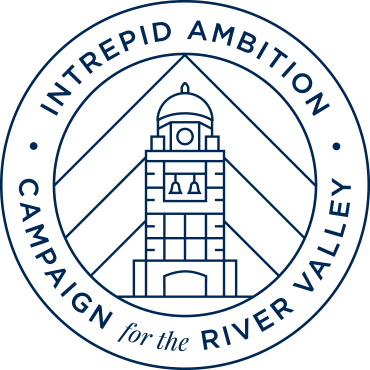
Fort Smith High School, now Darby Middle School, was the first home of UAFS. Circa 1927
A Legacy of Courage
Fort Smith has always been a city of strength. Born as a frontier military post in 1817, it has long been a place where survival demanded courage and progress required an unbreakable spirit.
But through wars and disasters, economic upheavals, and the rise and fall of industries, The River Valley has never faltered. And for nearly a century, the University of Arkansas – Fort Smith has stood shoulder to shoulder with it, forging a path toward the future.
When Fort Smith Junior College opened its doors in 1928, the world was on the cusp of the Great Depression. Families struggled to make ends meet, businesses shuttered, and uncertainty loomed. Yet, in a small, borrowed classroom, a handful of students pursued an education, knowing that knowledge would be their way through. As the years passed, the college weathered World War II, watching its classrooms empty as young men went off to fight. By 1944, only four students remained to earn diplomas.
But when the war ended, the institution stood ready to welcome veterans home, helping them rebuild their futures through the G.I. Bill and opening doors that might otherwise have remained closed. In the 1950s, as Fort Smith’s manufacturing industry boomed, UAFS relocated to a permanent home on Grand Avenue, laying the groundwork for expansion to come.
As the years passed, Fort Smith Junior College became Westark Community College, then Westark College, and finally, in 2002, it achieved university status, entering the University of Arkansas System and embracing a future of academic rigor.
But those decades of progress also tested our region’s strength. The 1996 tornado tore through downtown, carving a seven-mile path of destruction through the River Valley. Sixteen years later, the closure of the Whirlpool plant displaced hundreds of workers, shaking the local economy. In 2019, the Arkansas River flood swallowed entire neighborhoods, forcing families from their homes. And in 2020, a global pandemic stole thousands of lives and pushed the economy to its limits, creating widespread vacancies in critical industries.
Through every hardship, UAFS was there—not just as a place of learning but as a force for rebuilding. When local businesses struggled, the university’s Center for Economic Development provided the expertise and resources to help them recover. When the city needed skilled workers, UAFS swiftly expanded its programs to meet the demand, ensuring it remained a place of opportunity.
Today, a new two-year nursing program strengthens the healthcare sector, enrolling its first cohort in 2024, following an ambitious promise to double the number of nurses over the next decade. Set to launch in 2025, a bachelor’s of engineering degree and complimentary training program in advanced manufacturing aim to prepare students for careers in Fort Smith’s dominant sector. Data science and artificial intelligence programs are booming, with students conducting important research on AI integration from archiving to agriculture, positioning our region as a tech-forward hub. In the Windgate Art and Design building, students, faculty, and visiting artists nurture the creative spirit of our region – beautifying our community. And downtown, the Center for Economic Development brings the mission and passion of UAFS into the heart of our city, directly supporting every aspect of our local economy.
We are leading the charge in reimagining and revitalizing.
We always have.

This story is powered by Intrepid Ambition – the vision to dream and the courage to lead.
Rachel Rodemann Putman
- Director of Strategic Communications
- 479-788-7132
- rachel.putman@uafs.edu
